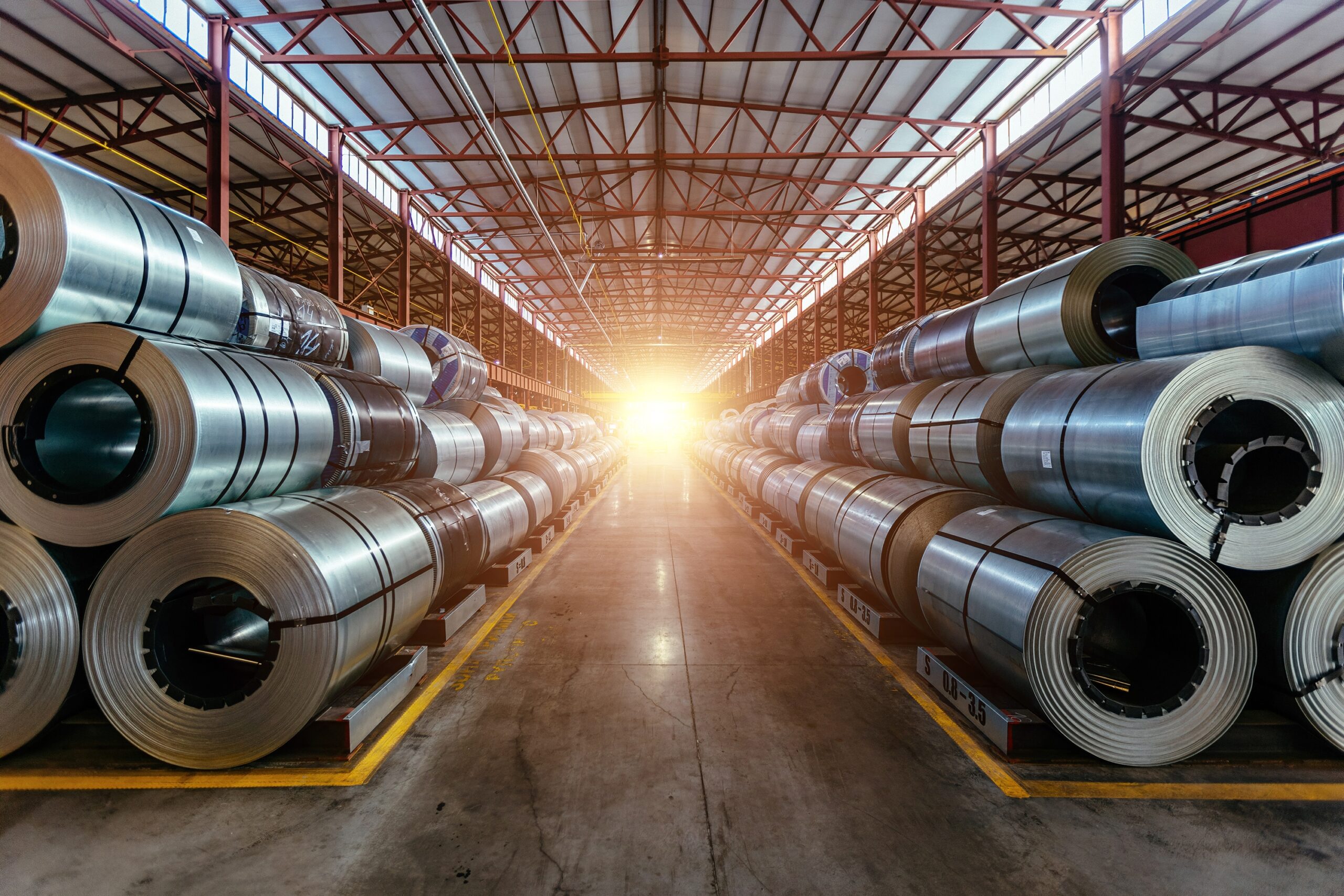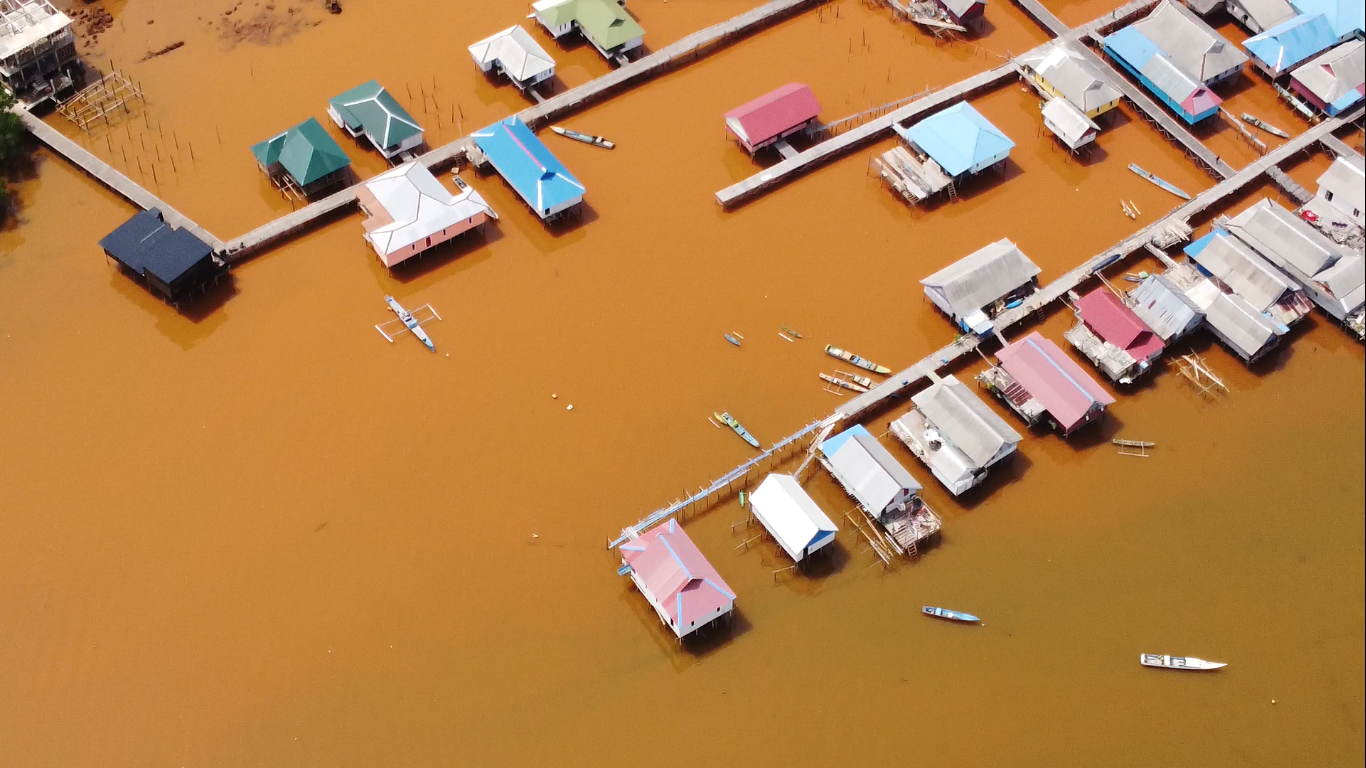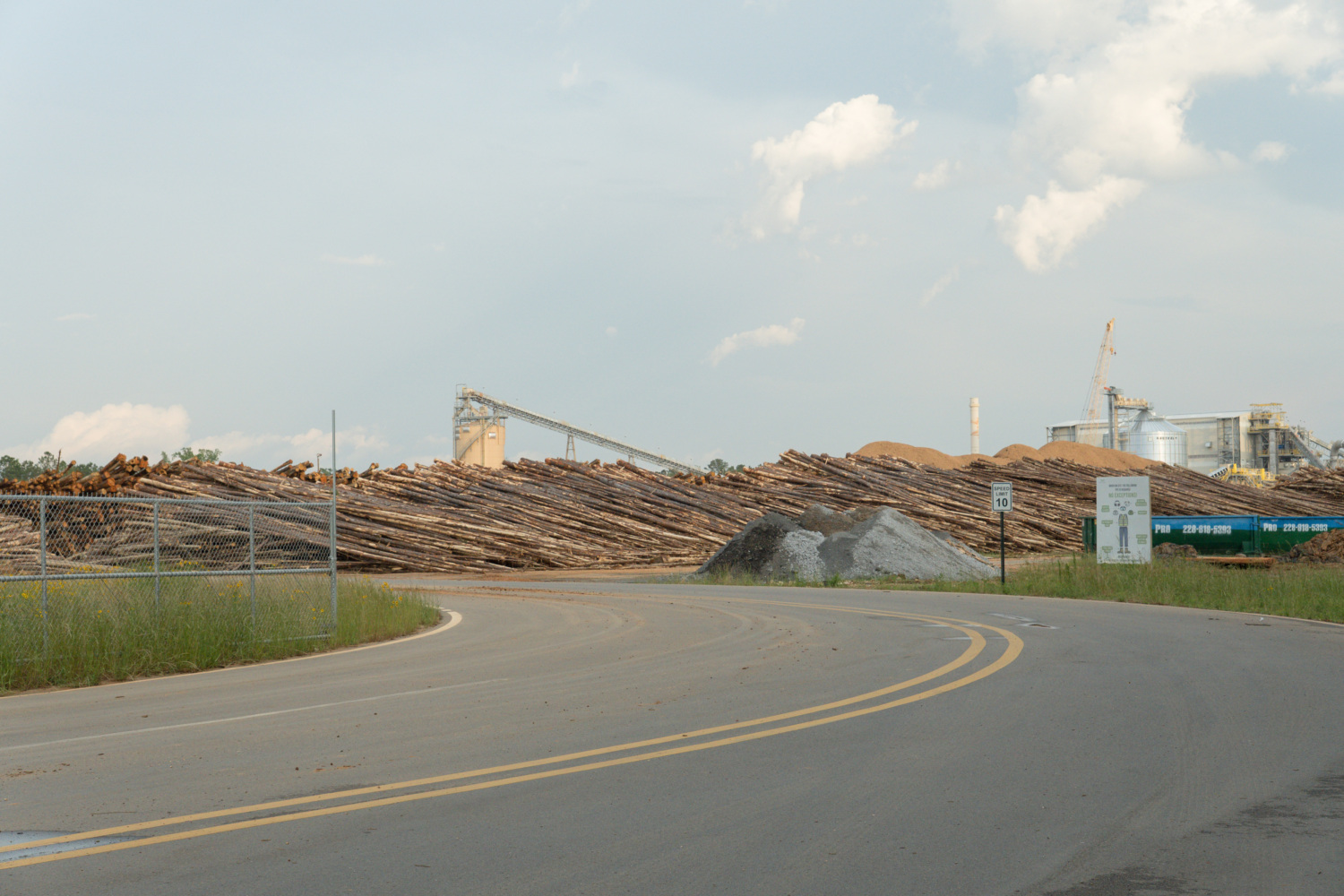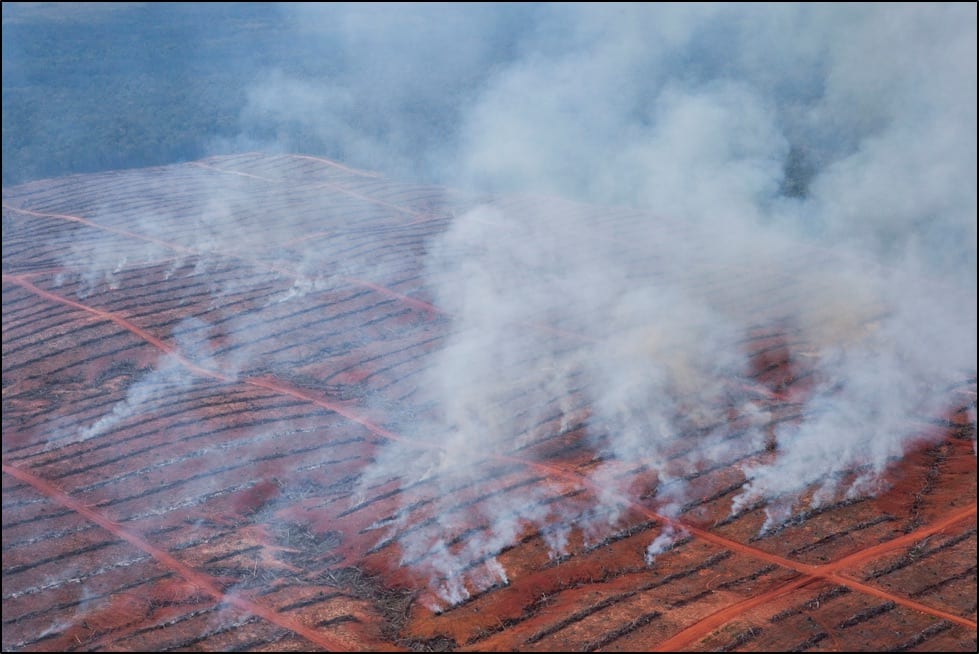
Extensive Satellite, Video, Photographic Evidence Shows Korindo’s Systematic Use of Fire
Bahasa Version “This information is valuable for our internal discussion. About the fire, it is true, so what do we want to argue,” said Luwy, a Korindo’s field technical staff who came with his friend to the report release. – Kompas, September 2, 2016.
Although a member of Korindo’s field technical staff admitted at a press event that his company does indeed use illegal fires to clear land for its oil palm plantations, related in the September 2nd issue of Kompas, the Korindo corporation now publicly asserts that it does not use this dangerous practice. However, extensive satellite, drone, and field research reveals comprehensive evidence to the contrary.
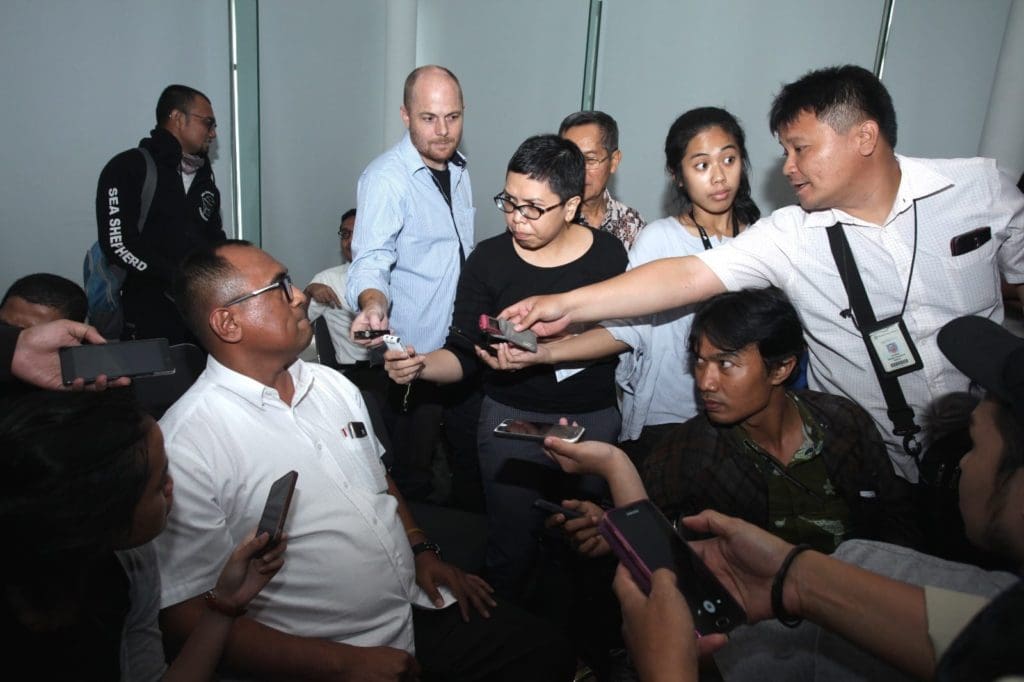 According to a report by the research group AidEnvironment, satellite images show that Korindo’s systematic use of fires closely mirrors its land clearing process. Korindo uses the fires to quickly and cheaply clear the biomass lying on the ground after it has deforested, to prepare the ground for planting palm oil. As seen by satellite in concession after concession, hotspot locations followed Korindo’s land development, and continued to appear in a predictable pattern in the newest areas that Korindo had recently cleared for its plantations. This clear pattern means that the fires could not have been natural or set by local communities for hunting, as Korindo argues, given that the affected areas shift year by year and directly follow Korindo’s activities.
According to a report by the research group AidEnvironment, satellite images show that Korindo’s systematic use of fires closely mirrors its land clearing process. Korindo uses the fires to quickly and cheaply clear the biomass lying on the ground after it has deforested, to prepare the ground for planting palm oil. As seen by satellite in concession after concession, hotspot locations followed Korindo’s land development, and continued to appear in a predictable pattern in the newest areas that Korindo had recently cleared for its plantations. This clear pattern means that the fires could not have been natural or set by local communities for hunting, as Korindo argues, given that the affected areas shift year by year and directly follow Korindo’s activities.
Below is just a small sampling of evidence of Korindo’s deforestation and burning for palm oil (for more information, see the full report).
PT Donghin Prabhawa Concessions
In total, 351 hotspots were recorded in PT DP, spread throughout the period 2013-2015 (43 in 2013, 144 in 2014 and 164 in 2015). The fires typically followed a few months after deforestation, making it clear that Korindo used the fires to clear the biomass from the land to get it ready for planting. Note that there were almost no fires in the forested area surrounding the plantation development, and also no fires in the areas that were already planted with oil palm. This shows that fires occurred during the land clearing process.
The images below show the recorded hotspots in 2013, 2014 and 2015, each overlaid with a satellite image of their respective years. The lighter green areas are the sections where land clearing had recently occurred as Korindo expanded its plantation.
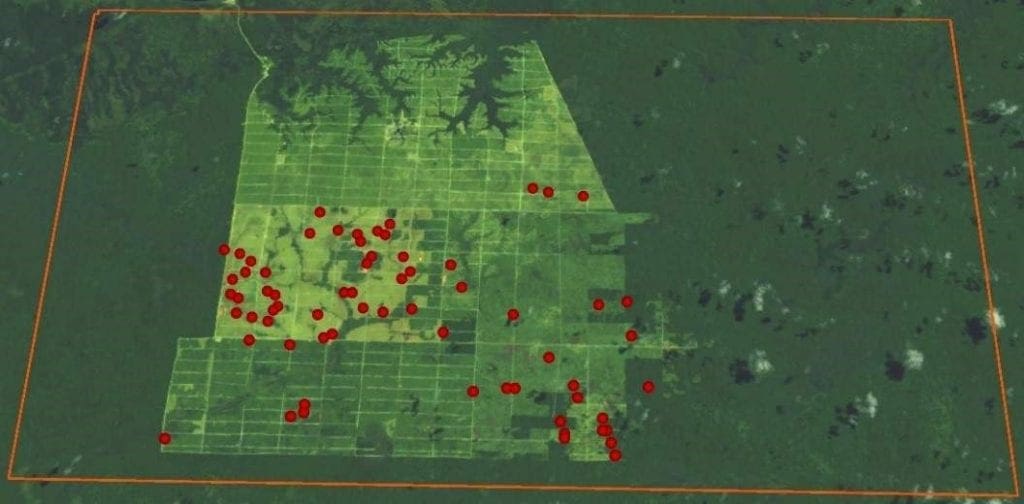
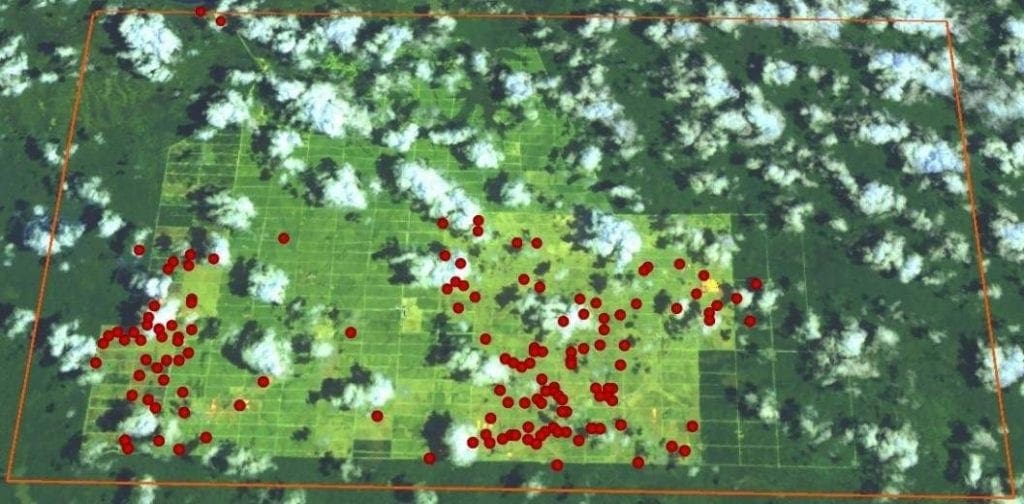
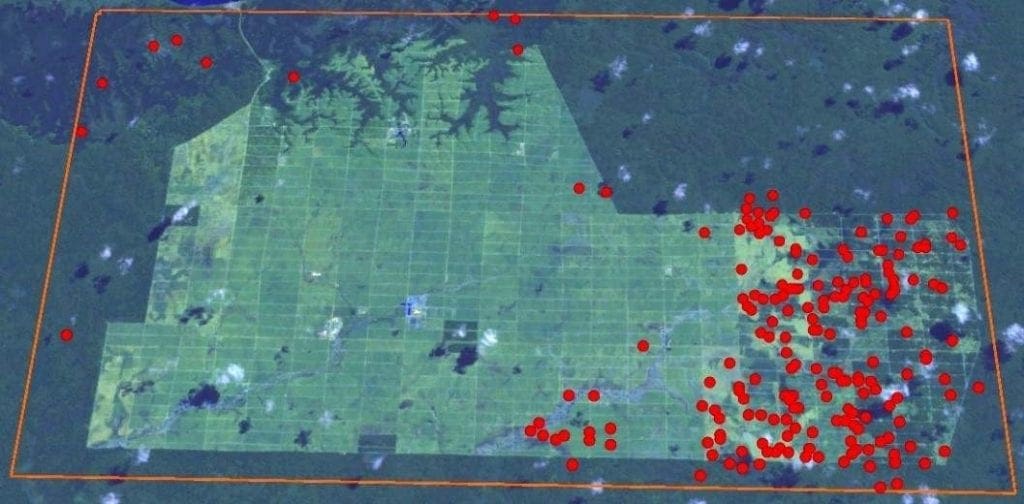
PT Tunas Sawa Erma 1B Concessions
Korindo subsidiary PT Tunas Sawa Erma 1B (PT TSE 1B), which holds an area of 19,000 hectares, began work in Papua in 2005. 25 local tribe clans own the majority of this land and have rejected Korindo’s plantation proposal. Nevertheless, in 2015, Korindo moved forward with land clearing in this area.
As the satellite images below show, there were 88 hotspots recorded in 2015 and six recorded in January 2016. By the end of April 2015, about 2,800 hectares had been cleared.
The massive fires set by Korindo on the PT TSE 1B concession are visible in the satellite image below, taken in late October 2015.
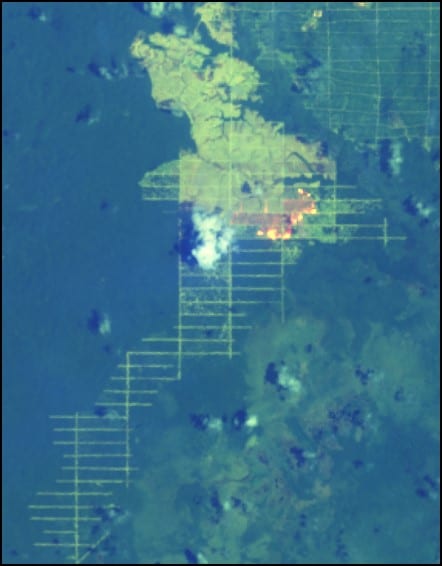
The brown color on the image below, taken in early May 2016, shows the area cleared by Korindo on the PT TSE 1B concession, which is about 500 hectares of primary forest and 2,300 hectares of secondary forest.
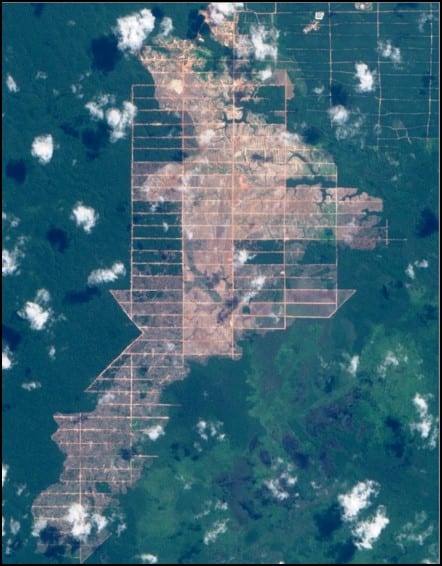
PT Berkat Cipta Abadi 1 Concessions
The entire PT BCA 1 concession area was forested before Korindo started its oil palm operations. During 2013 and 2014, a total of 4,500 hectares of primary forest were cleared, along with 8,700 hectares of secondary forest. Only a river corridor of 700 hectares was spared, as seen in the images below.
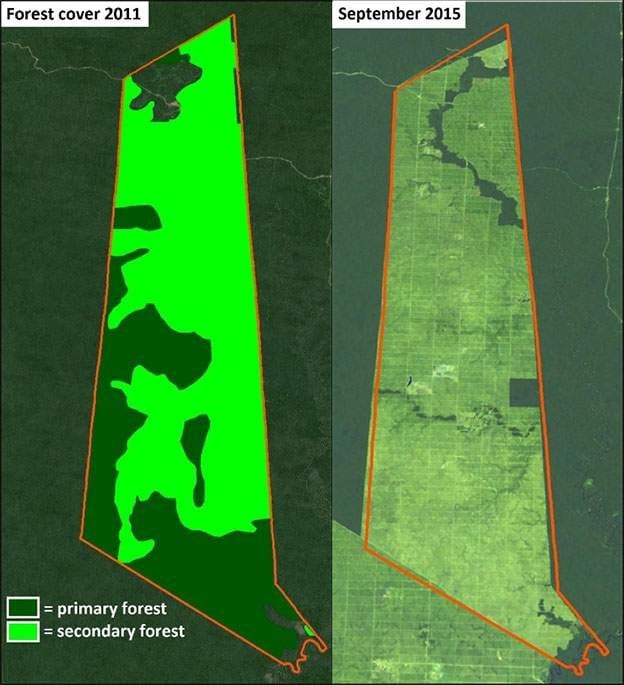
Land development began in the north and ended in the south. Hotspots followed deforestation and subsequent land development, as can be seen on the graphic below. In total, there were 106 hotspots recorded in 2013 and 2014. Burning is illegal under Indonesian law, and in addition, the Indonesian Ministry of Forestry specifically prohibited PT BCA from burning wood waste. Korindo ignored the extra warning and the fact that their fires are illegal, and continued burning.
The image below shows the spread of hotspots from north to south in 2013 and 2014 as Korindo cleared the land. Again, the pattern of fires closely mirrors Korindo’s land development, illustrating how the fires were not natural.
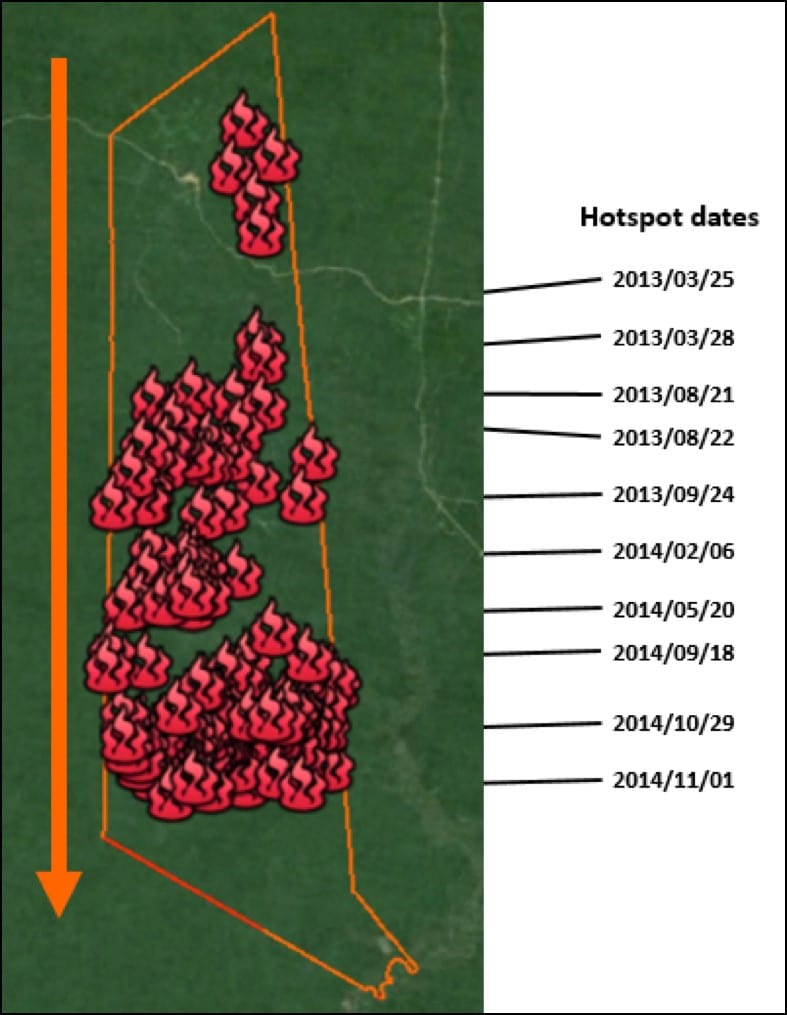
Aside from being extremely destructive for biodiversity and the environment, these illegal fires are incredibly dangerous for human health. A recent study by researchers from Harvard and Columbia found that the 2015 haze crisis in Southeast Asia likely caused 103,000 premature deaths in the region. The crisis was driven by intentionally set illegal fires by palm oil and timber agribusinesses. An estimated half a million people in Indonesia sought medical care because of the 2015 haze according to Indonesian authorities. The crisis cost Indonesia $16 billion in losses in agriculture, travel, tourism, forestry, and other industries, according to the World Bank.
Burning to clear forests is also illegal, prohibited under Indonesian Law No. 32/2009 on Environmental Protection and Management, among others. Possible penalties for those found guilty of breaking this law include fines and prison terms. The findings of this investigation has been filed with the Indonesian government and the Ministry of Forestry announced that they will investigate.
In addition to the the fires, the Mighty report showcased aerial drone footage, videos, and photos of extensive deforestation by Korindo. Even Korindo’s own promotional video for its plywood business shows deforestation, chainsaws cutting through old growth logs, and boasts about clearing natural forest. Papua’s rainforests hold a full 50% of the Indonesian archipelago’s biodiversity. Korindo’s decimation of these lush forests has resulted in the destruction of habitats of many species endemic to the area. In total, the company has cleared more than 50,000 hectares of forests in Papua for palm oil since 1998, an area approximately the size of Seoul, South Korea.
Responsible production of palm oil is possible. The palm oil industry has a long way to go and Korindo is one of the worst offenders. But many other companies have shown commitment to deforestation-free and exploitation-free palm oil, including companies that have dropped Korindo as a supplier because it is violating their policies. These companies show that responsible production and profitability can go hand in hand. For the sake of the Papuan forests, indigenous communities, and wildlife, we hope that Korindo will become Green Today, not “Green Tomorrow”.
Featured photo is of smoke rising from burning wood rows in Korindo’s PT Berkat Cipta Abadi concession; ©Ardiles Rante/Greenpeace; 26 March 2013
